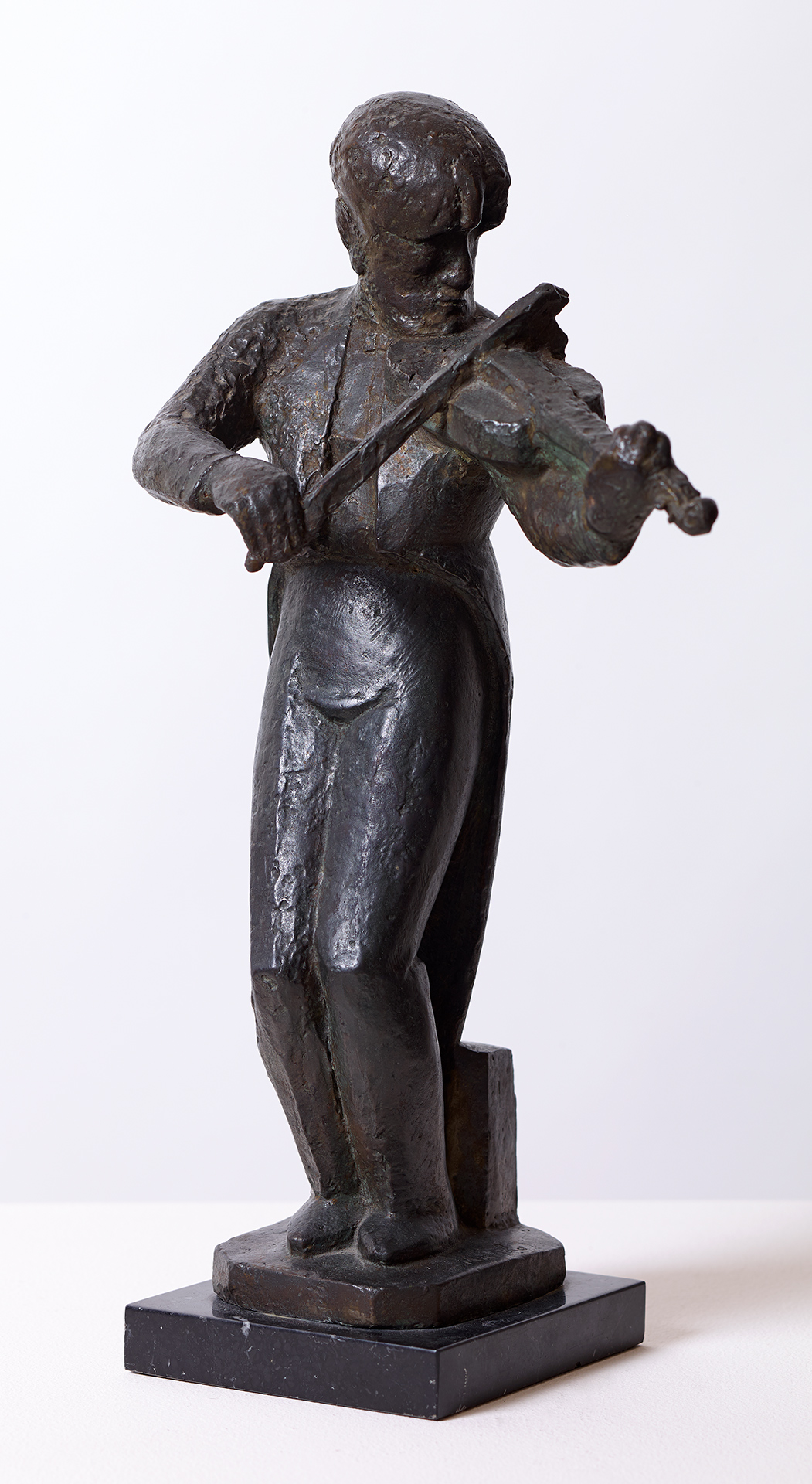
Manolo Hugué (Barcelona, 1872 – Caldes de Montbui, Barcelona, 1945)
The Violinist Costa
circa 1935
WORK INFORMATION
Bronze, 33 x 20 x 9 cm
OTHER INFORMATION
Signed on the left side of the base: "Manolo" Inscription on the back of the base: "Fundación Becchini"
Postmodernism entailed, among many other things, the incorporation into Catalan art of elements which in sociological terms would be described as “lumpenproletariat”. Socially obscure men with an atypical, unsystematic education—though born artists—joined the ranks of the leading artistic groups of their generation. One of the most striking examples was Manolo Hugué. His classroom was the street, combined with sporadic courses at the Llotja School of Fine Arts in Barcelona, although his true master was the now utterly forgotten sculptor Antoni Bofill i Conill. Hugué performed jobs related to his artistic calling, working on public decorations and as an assistant in the workshop of Eusebi Arnau and at the Masriera y Campins foundry.
By the late 1890s he had become fairly well-known, as evidenced by the prize he received from Els Quatre Gats for best author of a stage piece on magic (1899) and the fact that Ramón Casas included him in his portrait gallery of contemporary personalities, exhibited in 1899.
After a time spent in Paris, Barcelona and Arenys de Munt (Barcelona), he stopped at Ceret, France, in 1919 and stayed until 1927. That year, seeking a suitable climate for his polyarthritis, he moved to what would become his definitive home in the town of Caldes de Montbui and continued to organise exhibitions from there.
Hugué's work, basically comprising sculptures of manageable size in which he mingled matadors with Aphrodites and manolas with Maenads, is rooted in the most authentic Catalan Noucentisme and is uneven but honest, often making very valuable discoveries. His style was always based on classicism, but that classicism was tempered by the wisdom of a man of the people who had acquired a solidly internalised foundation of knowledge.
The Violinist Costa is a typical Hugué statuette that schematically captures the figure of the Catalan violinist Francesc Costa, whose fiery, ragged style and ugly, pockmarked, wild-haired physique made him a very colourful character that attracted the attention of numerous visual artists—aside from Hugué himself, who also did an excellent bust of the musician in 1935—like Ramón Casas, Valentín de Zubiaurre, Xavier Nogués and many others.
The date of this piece is unknown, but based on the style we can easily identify it as a work from his mature period when he had already returned to Catalonia, where he would have had a chance to meet the violinist. In the absence of more conclusive details, we assume that it could be contemporaneous with the aforementioned bust.
Hugué, in addition to being an important sculptor, was also a painter with markedly Fauvist roots. But above all, he was an amazingly suggestive character. His personality, bursting with vital energy, crystallised into a unique philosophy of life, a blend of high and low-brow culture, of lofty transcendence and cunning craft. [Francesc Fontbona]

